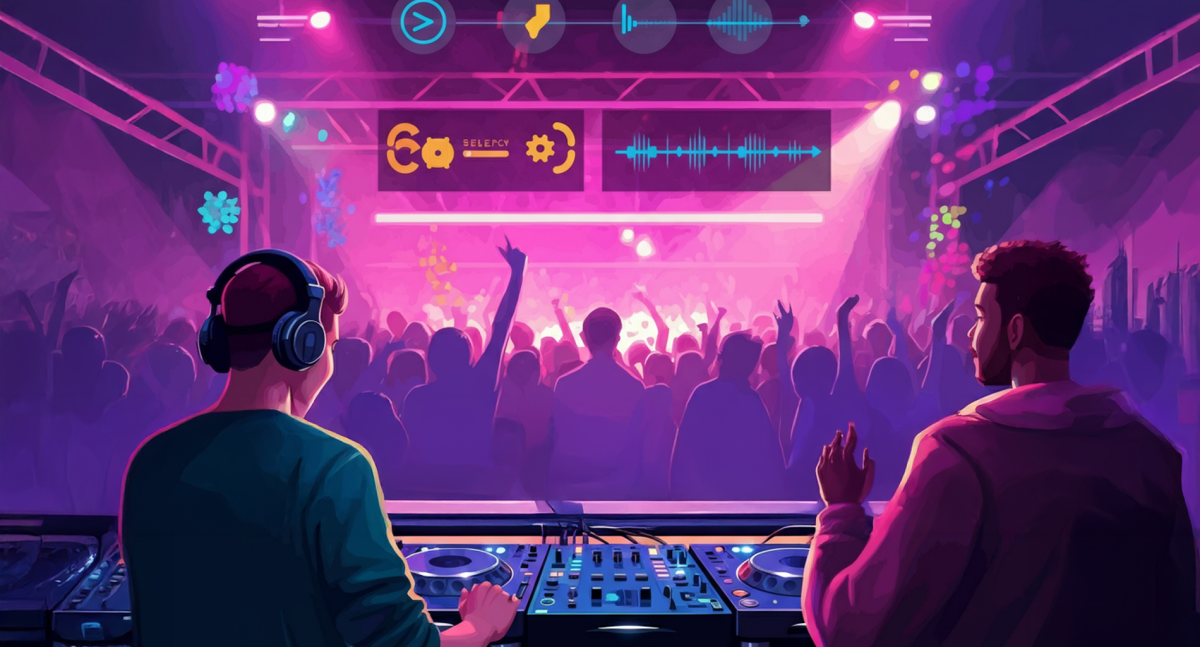Reading the crowd is the ultimate DJ superpower. It’s the difference between an okay set and one that people rave about for weeks. When you truly understand your audience, you can craft a musical experience that connects with them on every level. Whether it’s a packed nightclub, an intimate lounge, or a festival stage, mastering the art of crowd reading is essential. Here’s your guide to decoding the audience and delivering unforgettable sets.
Why Crowd Reading Matters
Crowd reading is more than just observing your audience—it’s about understanding their energy and tailoring your set to meet and elevate their vibe. A well-read crowd is one that:
- Stays engaged from start to finish.
- Shares their energy back with you, creating an electric atmosphere.
- Leaves feeling like your set was crafted just for them.
To achieve this, you have to tune into more than just the music. Pay attention to their behavior, body language, and emotional cues to stay one step ahead.
Observing Your Audience’s Body Language
Start every set by taking stock of the room. Pay close attention to the crowd’s physical movements and facial expressions—it’s like reading the pulse of the dancefloor.
1. Dancefloor Dynamics
- A full and active dancefloor is usually a sign that your track selection is on point. Keep the energy levels steady to maintain momentum.
- If people are leaving the floor, it might be time for a change. Slow down, or switch genres to regain interest.
Pro Tip: Watch for subtle shifts—are people nodding their heads, swaying, or just standing still? These micro-movements will tell you a lot.
2. Emotional Connection
Look for moments when the crowd reacts emotionally. You’ll spot these through cheers, hands in the air, or even those huge smile-inducing drops. These reactions will guide your decisions on whether to build energy further or throttle it back for a breather.
Influencing Mood Through Track Selection
Track selection is your most valuable tool to shape a crowd’s energy and vibe. Here’s how to make those choices count.
1. Building a Narrative
Think of your set as a story with ebbs and flows. Too many high-energy tracks back-to-back can tire out the crowd, while a flat set will cause boredom.
- Start with something familiar to grab their attention.
- Slowly introduce fresher/experimental tracks once you’ve earned their trust.
Challenge Yourself: Mix in transitions between genres to surprise the audience and reignite energy during quieter moments.
2. Crowd-Centric Decisions
Some tracks are instant wins—tracks that resonate across audiences. While you should always express your style, keep the crowd in mind.
- Use nostalgic hits or crowd sing-alongs as tools to connect on a universal level.
- Introduce new or underground tracks gradually while keeping touchpoints with recognizable sounds.
Extra Tip: Save one or two massive crowd-pleasers for big transition moments or the peak of your set, when the energy is ready to explode!
Adjusting Tempo and Energy Levels
Managing tempo lets you seamlessly adapt to your audience’s mood or shift gears to steer the emotional direction of the night.
1. Reading Energy Levels
Gauge when the crowd is fully invested or needs rejuvenation. For instance:
- High Energy: Add drops or increase the BPM gradually to keep the momentum going.
- Downtime Energy: Slow it down with chill tracks to give the audience a breather before another buildup.
Pro Insight: Watch the hands; when the cheers go quiet, your moment to shift energy has arrived.
2. Dynamic Tempo Shifts
Rarely is it a good idea to switch tempos abruptly unless intentional—and even then, it needs to be done artistically.
- Utilize breakdowns in your set to camouflage BPM changes.
- Blending genres (e.g., house into techno) is smoother if the tempos align.
Pro Tool: DJ software such as Serato or Rekordbox has key-lock features that make tempo adjustments feel seamless without distorting pitch.
Tactical Use of Microphones and Effects
Engaging your audience isn’t always just about the tracks—it’s about how you add your unique personality into the performance.
1. Using the Mic Effectively
- A well-timed shoutout can be the spark that ignites your crowd.
- Avoid overusing the mic—short, impactful moments will keep their attention.
Quick Hack: Use the mic to cue the next big drop or transition for maximum excitement.
2. Creating Hype with Effects
- Play with filters, reverb, or delay to heighten tension before a drop.
- Use echo effects during transitions to create smooth yet dramatic changes between tracks.
Warning: Less is more! The magic is in subtlety when using effects to enhance, rather than dominate, the music.
Troubleshooting Common Crowd Reading Challenges
Even the best DJs face challenges. Here’s how to handle them like a pro.
1. Crowd Isn’t Reacting
If the crowd seems uninterested, focus on switching up your set with familiar tracks or interact via the mic to rebuild engagement.
2. Mixed Energy Levels
Some crowds are a mix of dancers and sitters—play to both by alternating between upbeat tracks and low-energy breather moments.
3. Unpredictable Requests
While requests can derail a set, think of strategic ways to blend them if they fit your style. If not, politely decline and use similar tracks that match the crowd’s vibe.
Final Thoughts on Crowd Reading
Great crowd reading is a combination of preparation, intuition, and adaptability. By observing your audience, carefully selecting tracks, and adjusting to their energy in real-time, you’ll keep your shows memorable and electric.
- Learn from every set. Take notes on what worked and what didn’t to refine your skills with every performance.
- Stay present in the moment with your audience; connection is key.
Reading and responding to your audience is an art form. Practice it, own it, and watch as your sets become the highlights of every event.

